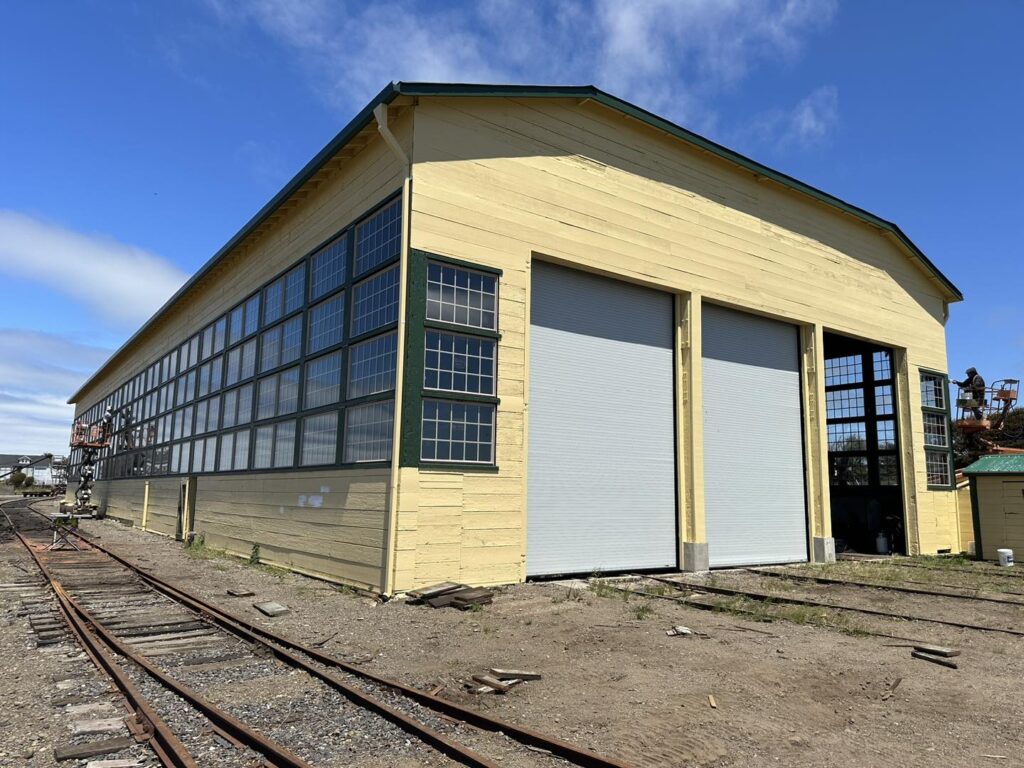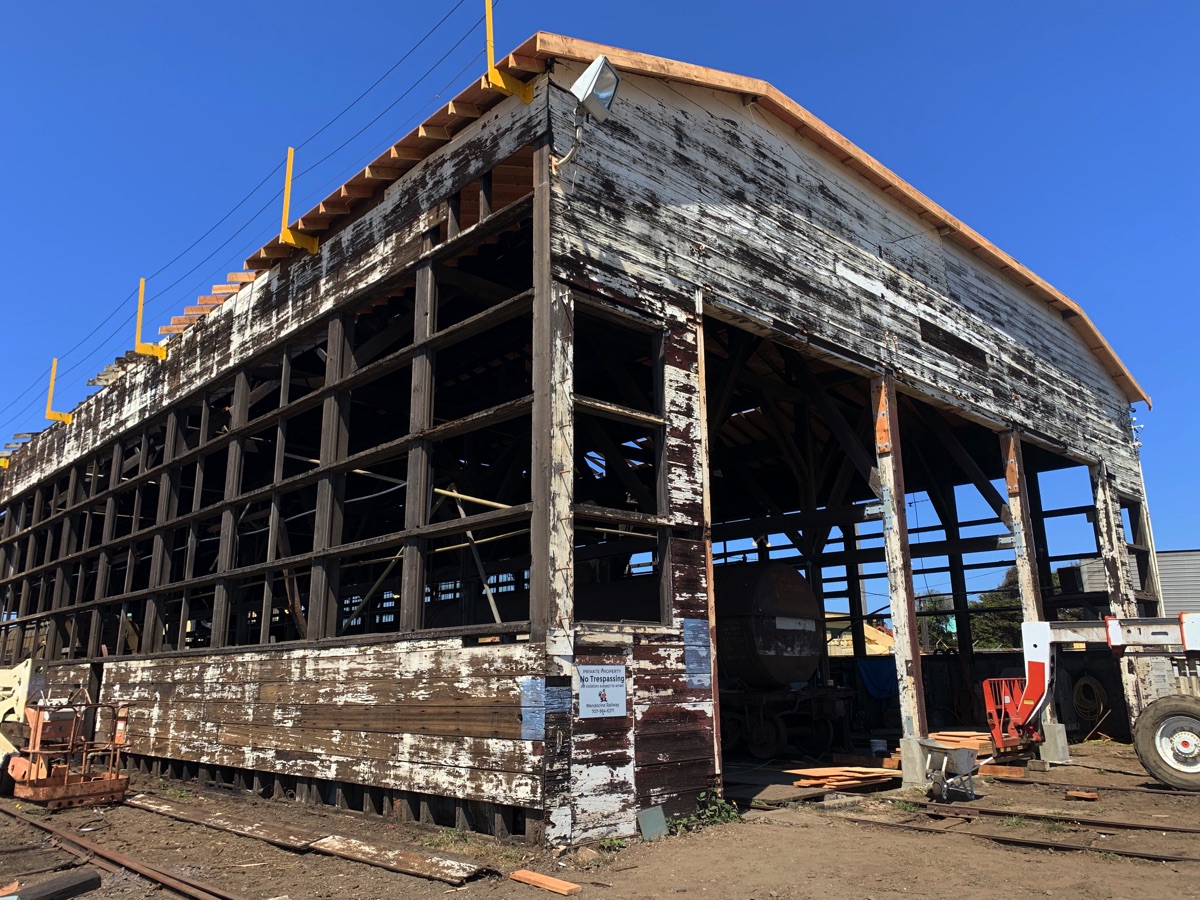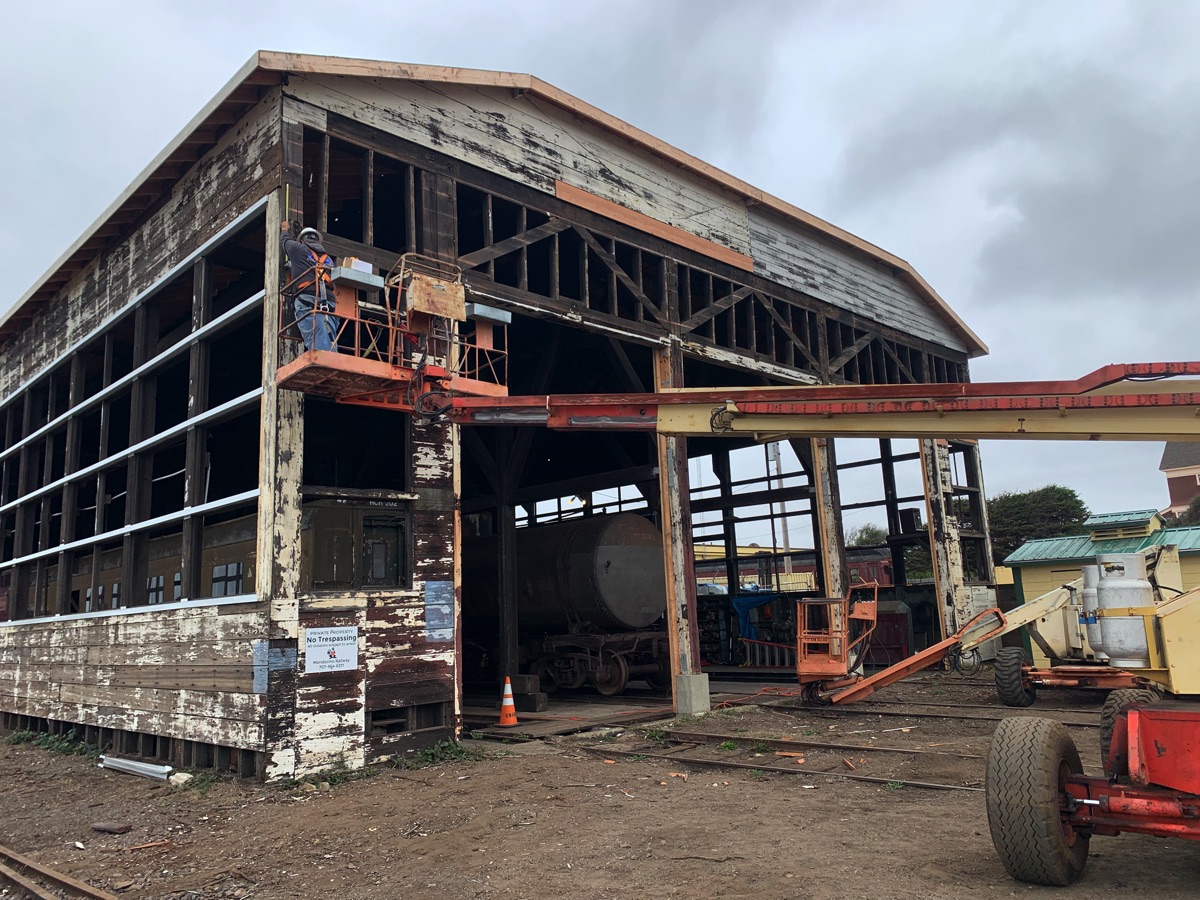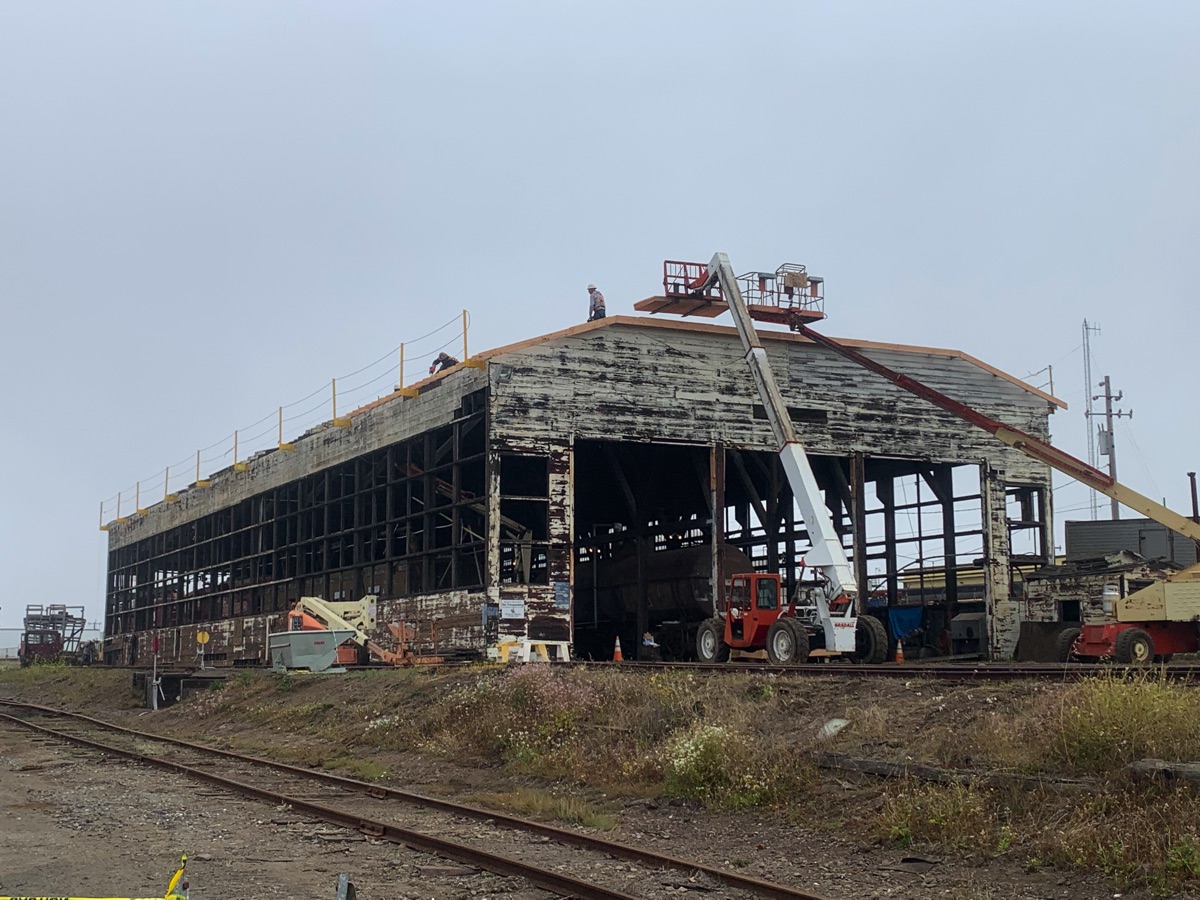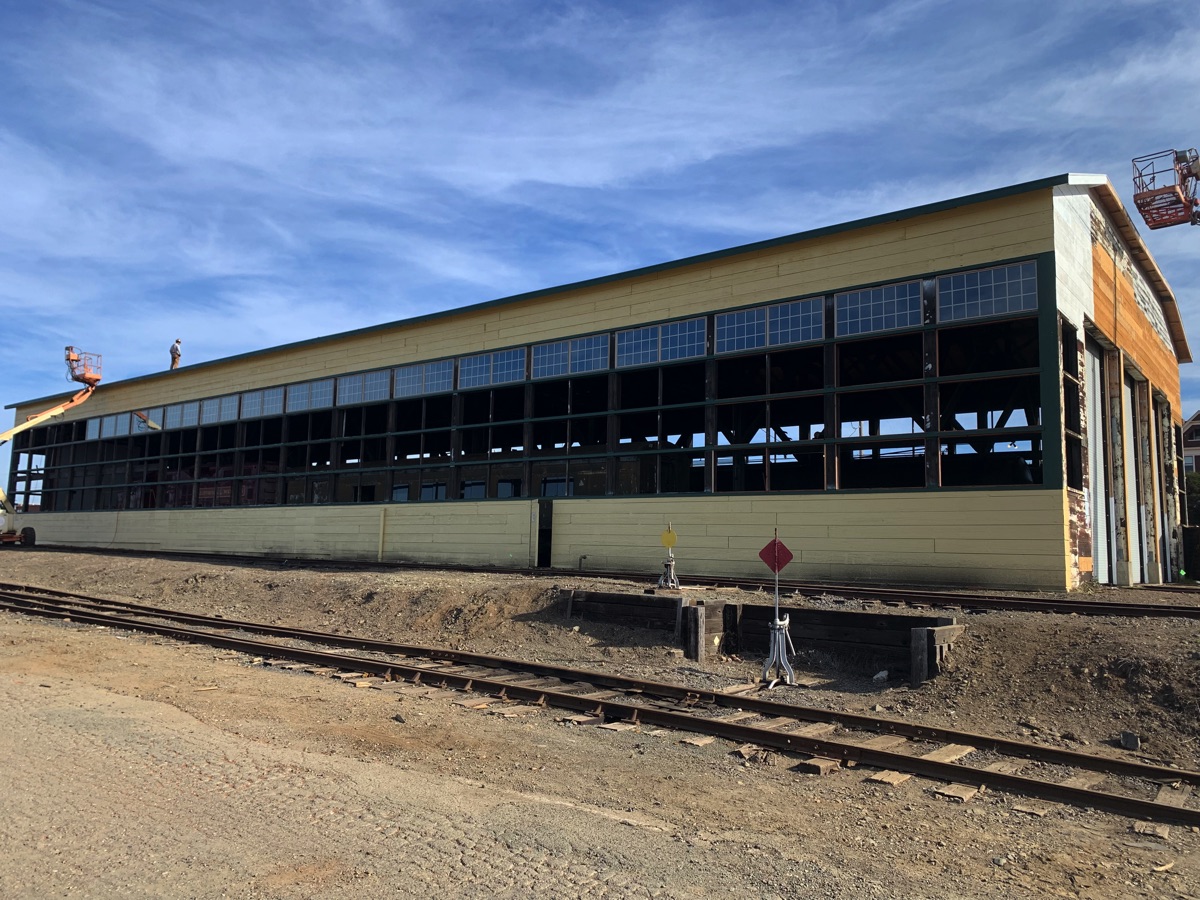The Roundhouse
Uncover a hidden gem of railroad history with our Roundhouse Tour – a journey into the heart of California Western’s storied past. This isn’t just a building; it’s a time capsule of ingenuity, craftmanship, and evolution in the railroad industry. Whether you’re a history buff, a railroad enthusiast, or simply looking for a unique adventure, the Roundhouse Tour is an unforgettable step into the past.
A Legacy Rebuilt
Originally constructed from old-growth redwood, our historic engine house has been central to California Western’s steam locomotive operations for over a century. After a devastating fire in the early 1900s, it rose again, meticulously designed to store and service a robust fleet of steam engines. It also housed a state-of-the-art machine shop, where innovation met precision to keep the railroad running.
As rail technology advanced, so did the engine house. It adapted to accommodate the powerful Baldwin diesel locomotives, transforming into a modern run-through facility with enhanced infrastructure like sand hoppers and fueling systems. This evolution stands as a testament to the resilience and adaptability of the railroad industry.
Restored to Glory
Decades of deferred maintenance left this historical treasure in decline. But in 2003, we took on the challenge of restoration. Staying true to its original mid-20th-century design, we painstakingly replaced blown-out windows, rebuilt the roof, and restored the inoperable end doors to working condition – breathing life back into this beloved structure.
A Living Museum
Today, the engine house is more than just a relic – it’s a living museum where history comes alive. Step inside to witness the majesty of vintage railroad equipment and see how the engine house still serves its original purpose. You’ll hear stories of its past, marvel at the preserved craftmanship, and gain an up-close look at California Western’s locomotive legacy.
Book a Tour of the Roundhouse
Why Visit?
- Exclusive Access: Explore areas reserved for railroad workers.
- Rich History: Walk through the evolution of railroading, from steam to diesel.
- Restored Heritage: See a fully rehabilitated building, lovingly restored to its former glory.
What's Included?
- Delicious Lunch: Kick off your adventure with a hearty meal, perfect for fueling up before exploring the wonders of the engine house.
- Guided 2-Hour Experience: Dive deep into the fascinating history of the engine house with a knowledgeable guide. Discover how it evolved over the decades, from housing steam locomotives to adapting for diesel engines.
- Storytelling and Insights: Hear captivating stories about the people and machines that made the railroad a pivotal part of California’s history.
- Photo Opportunities: Capture stunning shots of vintage locomotives and the beautifully restored engine house – perfect for sharing with friends and family.

